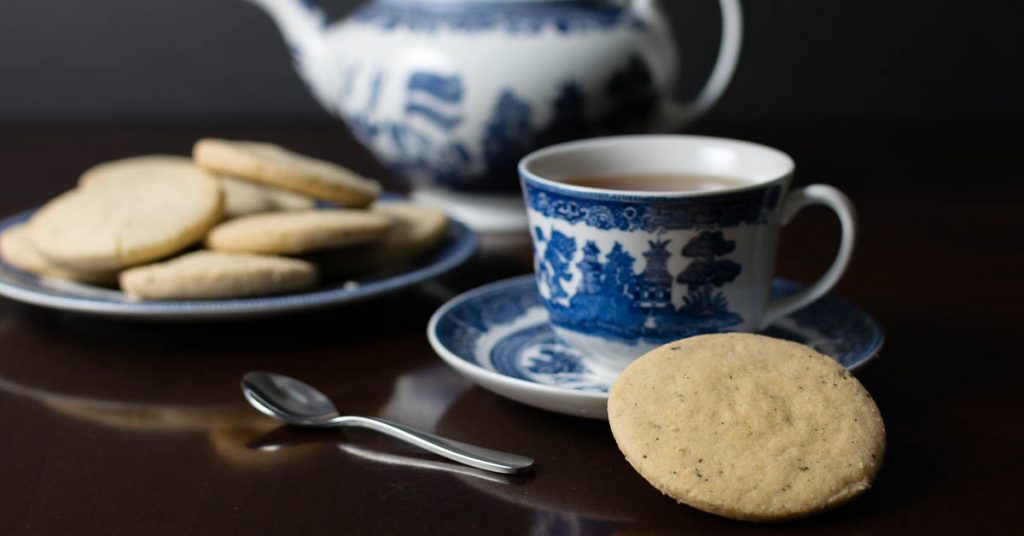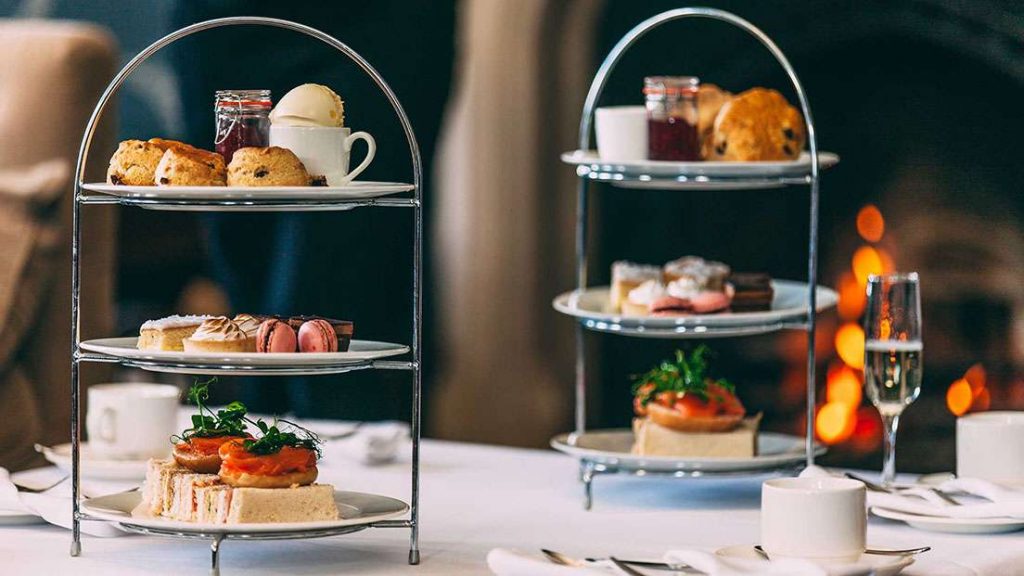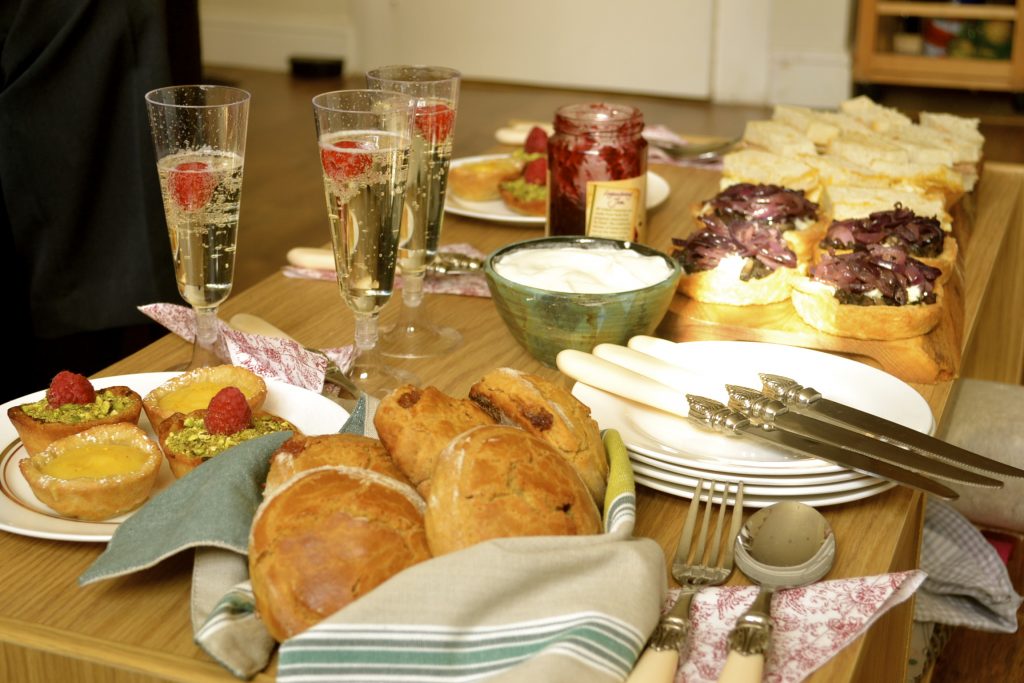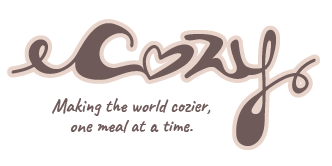High tea, low tea, afternoon tea, elevenses (bet you didn’t know about this one) – I guess it’s safe to say the British do love their tea. If you ever find yourself hungry and in the U.K., your stomach will easily be rescued by at least one of these British social tea times. Here’s the gist…
First of all there’s elevenses…
The tradition of elevenses is rather new to the British. British tea historian, Bruce Richardson, speculates that the custom popped up in the 20th century when it was first referenced in literature. This late-morning work break involves a light snack of a doughy pastry of sorts – think muffins, scones (what American’s know as biscuits), and biscuits (a.k.a. cookies). And as the name implies, it occurs at 11 o’clock in the morning. Even as the hobbit’s third meal time of the day, elevenses remains strongly entrained in today’s British culture. A 2009 article in The Telegraph even claims it as “a vital element of our traditional way of life.”

What is Afternoon Tea and where did it come from?
Afternoon tea is just the fancy-schmancy affair you’d expect the British to create because one just couldn’t wait until 8pm for dinner. Rather than bumping up dinner time from 8pm to say, a more reasonable 7pm, a new meal emerged between the 1830s and 1840s. Leading the way for this extra meal was the Anna Maria Russell, duchess of Bedford. In Victorian times, tradition has it that lunch for the upper class was generally light and served at noon and dinner was served no earlier than 7:30pm. Blasphemy! Legend has it that the duchess felt “that sinking feeling” (fancy English for “she was HANGRY”) and to quell her hunger pangs she ordered tea and snacks to her boudoir. From there it was a slippery slope. This afternoon snack was soon made a habit by the duchess and the duchess’ friends began to join her in the post-lunch ritual, setting a trend among the aristocratic community. Afternoon tea became synonymous with ‘Low Tea’ named after the height of the tables which the duchess and her friends dined as it was said they enjoyed their tea and gossip on comfortable low sofas.

Here is where you find the tiers of plates filled with crustless finger sandwiches, dainty scones, delicate cakes, puffy almond macaroons, and other delectable nibbles. Generally served around 3 or 4pm, this is a time where you’ll want to mind your manners – it was created by a duchess after all. A proper tea time guest will place their napkin on their lap, sit upright, and stir gently. Splashing tea, clinging tableware and finger licking is considered beastly. British tea is meant to be relaxing, but to be honest it’s quite far from cozy.
As if things couldn’t get any further from comfy, a proper guest will not devour everything sitting in front of them. What kind of meal is that?! But our friend Richardson shares a piece of etiquette advice from international etiquette expert Dorothea Johnson – You don’t want to appear hungry at this meal – propriety calls for restraint. But if there’s anything you do remember to do at this meal – is keep those pinkies down.
What is High Tea and where did it come from?
High Tea is a more cozy version of Afternoon Tea for the working man. While taking tea and fancy scones at 4pm was all well and good for the upper class, the working class ran a different schedule, let alone a different budget. While tea was still quite expensive at the time, the working class couldn’t’ afford a luxurious midday snack but also couldn’t hold out until 8pm for dinner. With that, a wearied factory worker would arrive home at 6pm in the evening and have a light snack consisting of a mug of tea, bread, vegetables, cheese and occasionally meat. Variations of high tea also included the addition of pies, potatoes, and crackers.

The common believe is that high tea got its name from the fact it was eaten high on a table, as opposed to the low upholstered sofa’s the duchess and her friends enjoyed their afternoon tea on. But of course, soon after, the upper class developed their own variation of high tea – a meal that could be eaten when their servants were away or not available, as it was easy to prepare. The aristocratic folk’s version of high tea involved the blending of Afternoon Tea and high tea, with the addition of pigeon, veal, salmon, and fruit.
What is the difference between Afternoon and High Tea?
Aside from their origins and the items on the menu mentioned earlier, it is important to note that the Afternoon Tea menu served in the U.K. today, is often referred to as high tea in many other parts of the world. Because of this, well known hotels use the term ‘High Tea in London’ to advertise their Afternoon Tea because so many of their guests are from over seas. Some tea rooms do serve authentic high tea as it was in intended, where their menu includes additional savory plates such as English muffins, Welsh Rarebit, pies, or omelettes.
But if nibbling on dainty sandwiches and sitting up right for three hours isn’t your cup of tea (yes, absolutely pun intended) then enjoy it in the comfort of your humble abode and check out How to Cozy: High Tea at Home (coming soon!).


